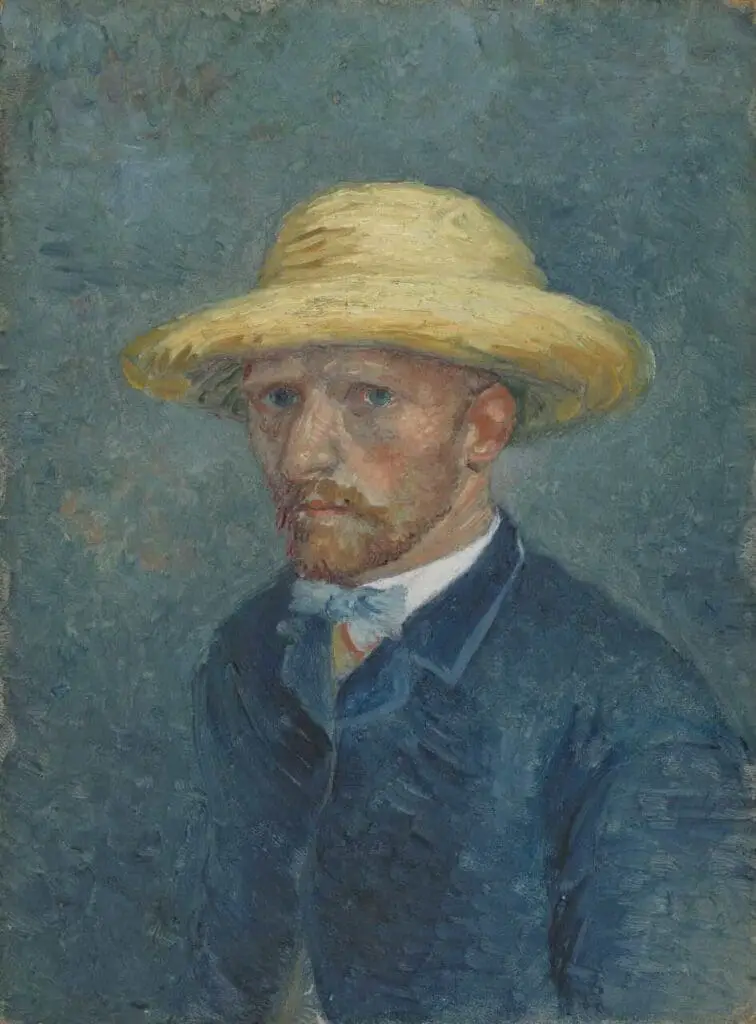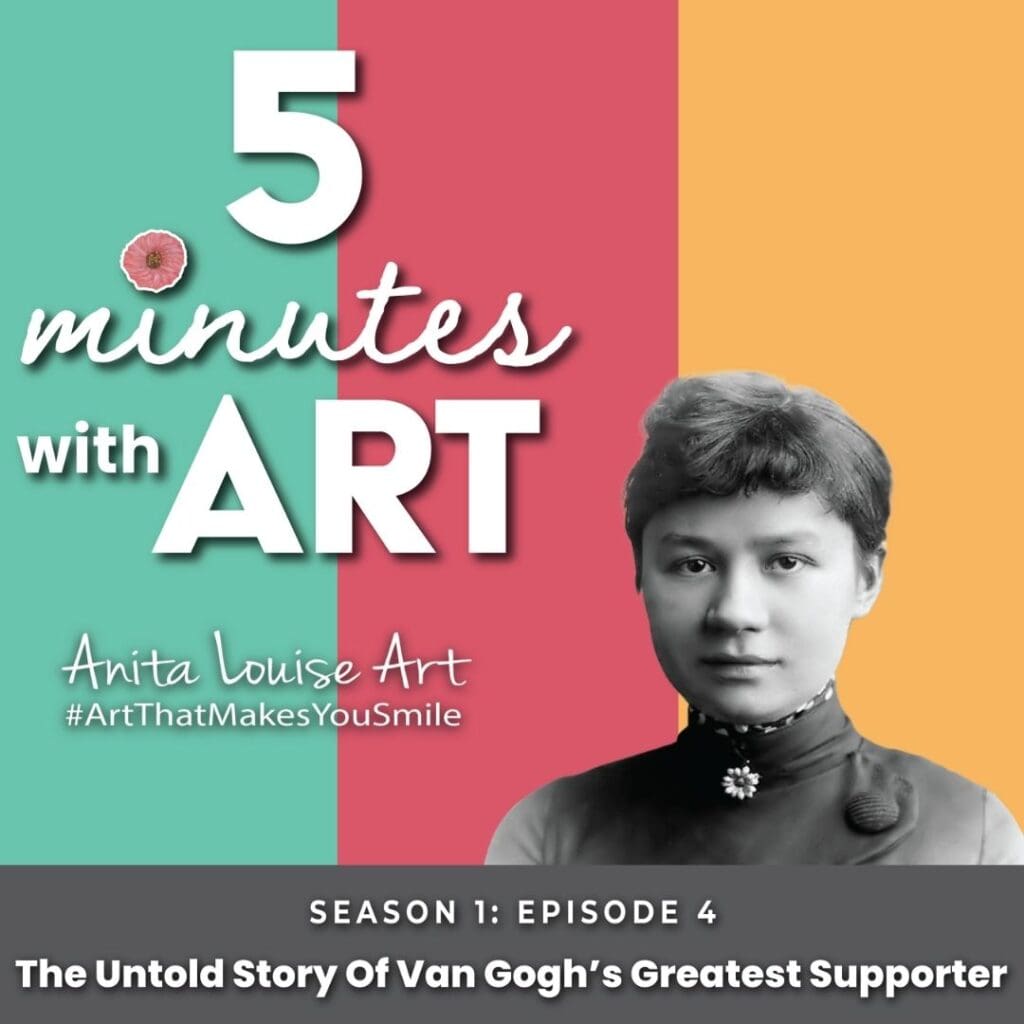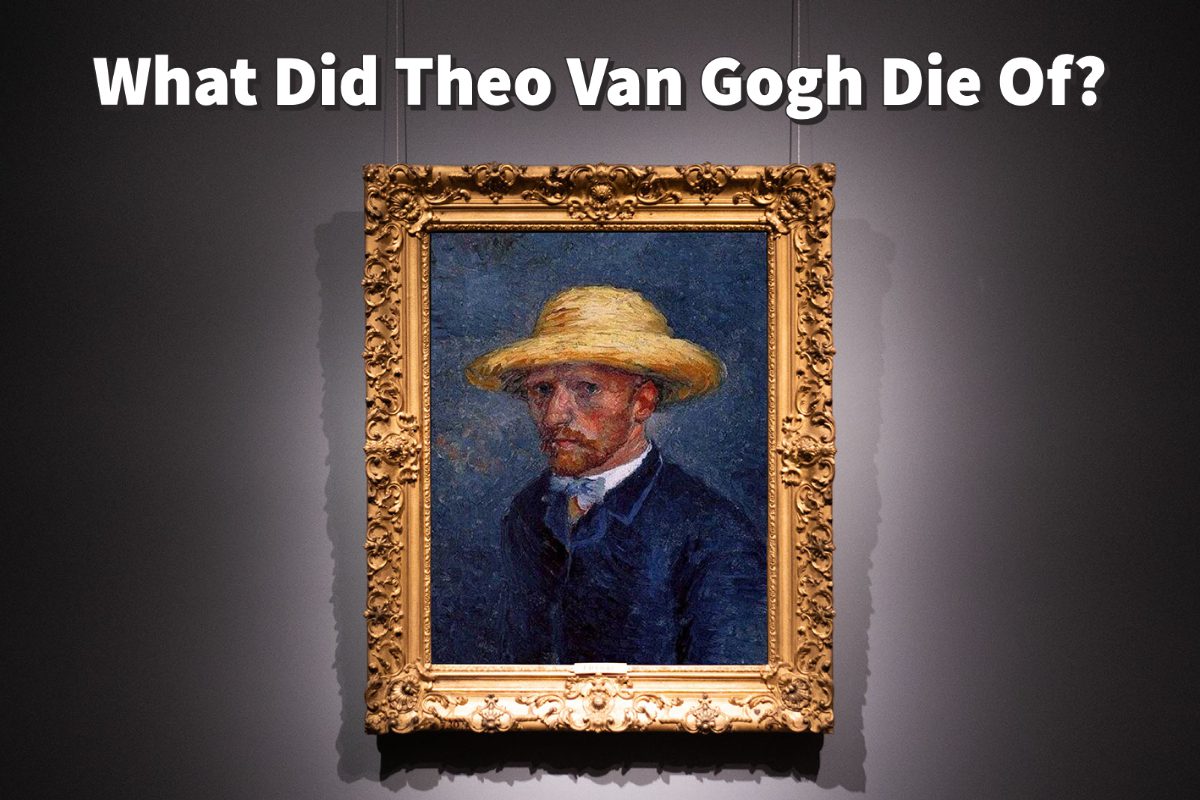You cannot talk about Vincent van Gogh without talking about his brother, Theo van Gogh. Theo was one of Vincent’s most essential supporters; he financially helped Van Gogh throughout his life and artistic career.
Theo van Gogh’s cause of death is dementia paralytica; this disease is most commonly associated with the final stages of syphilis. After Vincent died with Theo by his side, Theo’s health deteriorated, and he died just six months after Vincent van Gogh died.
Table of Contents
- Theo Van Gogh’s Death
- What Is Dementia Paralytica That Theo Van Gogh Had?
- 12 Reasons Theo Van Gogh Was Central To Vincent Van Gogh’s Success
- Frequently Asked Questions
- Related Questions
A person who dies from dementia paralytica has had syphilis for a long time and does not know it. They usually die disoriented and bedridden.
Theo Van Gogh’s Death
Theo van Gogh died in 1891, just a short six months after his brother Vincent died. He was the younger brother of Vincent van Gogh and his unfailing supporter; Theo financially and emotionally supported his brother, allowing Vincent to devote himself to his painting.

After the death of his beloved brother Vincent, Theo’s health also started to deteriorate. He was admitted to the Willem Arntz Hospital, a psychiatric hospital, in November 1890.
He died in January 1891, and the cause of his death was listed as “dementia paralytica.” The terms dementia paralytica were listed as “heredity, chronic disease, overwork, and sadness.”
Theo had always been very sick, but he was very ill after his brother Vincent died. I am sure that the nature of the death (self-inflicted gunshot to the chest) must have been challenging for Theo to accept or deal with.
After visiting his brother Theo, Vincent Van Gogh became very depressed about this financial future. The uncertainty of his future and finances became too much for him to bear on top of the mental issues, so Vincent took his own life.
As a loving brother who was very close to Vincent and had tried all he could to help him, it is only natural Theo would feel extremely sad at the loss of his brother. Vincent died with this brother Theo sitting by his bedside. After Vincent’s death, Theo’s health started to deteriorate rapidly.

Dementia Paralytica is most commonly associated with late-stage syphilis; as syphilis is a sexually transmitted disease, we assume Theo got the infection through sexual transmission.
This disease was one that Theo would have suffered with for a long time; at the time of his death, he was very happily married to Jo Van Gogh-Bonger. In many of his letters to his brother Vincent, he talks about how happily married Jo and him are.
During Theo’s lifetime, syphilis was widespread, and there was no treatment for it. A sufferer could have it for many years without knowing they even have the disease; this seems to have been the case with Theo. He was sick but did not know he had the disease.
Syphilis will eventually attack various organs such as the heart, brain, and spinal cord. In about 7% of the cases that get syphilis, they will get dementia paralysis or paralytic dementia.

Listen To Our Podcast About The Untold Story Of Van Gogh’s Greatest Supporter below or by clicking here.
What Is Dementia Paralytica That Theo Van Gogh Had?
Dementia Paralytica is also known as paralytic dementia and general paralysis of the insane (GPI). The disease symptoms will appear from 10 to 30 years after the infection.
This shows that Theo had this disease for a long time before he had any symptoms. He probably got it in his late teens and early twenties.
The first signs of the disease are fatigue, headaches, insomnia, and dizziness. Theo could have easily had all these because it was commonly known that he was not healthy and prone to illness.
As the disease progresses, mental deterioration and personality changes occur. A person can exhibit everything from loss of social inhibitions to impairment of judgment to depression, mania, and other psychological and physical ailments.
Also, the person can lose the use of some of their muscles and other bodily functions. The person who has the disease can also suffer from delusions such as ideas they have great wealth, are immortal, have thousands of lovers, and are entirely untouchable have a lot of power. They can also have seizures and other muscular problems.
Eventually, the person who gets this disease will become wholly disoriented and bedridden.

Theo was buried in Utrecht, Netherlands. But in 1914, his widow Jo asked that his body be exhumed and be moved to be buried next to his brother Vincent at Anvers-sur-Oise. It was only appropriate that these two brothers, who were so close in life, should also lie next to each other in death.
12 Reasons Theo Van Gogh Was Central To Vincent Van Gogh’s Success
Vincent van Gogh’s artistic legacy is legendary, but behind his success was a constant, unwavering pillar of support: his brother, Theo. Theo’s role in Vincent’s life and career was multifaceted and profound.
Here are twelve reasons that underscore Theo’s centrality to Vincent’s artistic journey:
- Financial Support: Vincent struggled with financial instability for much of his life. Theo, working as an art dealer, regularly sent money to Vincent, ensuring that he could dedicate himself fully to his art.
- Emotional Anchor: Vincent often faced bouts of depression and emotional turmoil. Theo provided emotional support, encouragement, and understanding, helping Vincent navigate his most challenging times.
- Artistic Feedback: Being in the art business, Theo keenly understood the art world’s trends and tastes. He frequently offered Vincent feedback, critiques, and suggestions, shaping his artistic evolution.
- Networking: Theo introduced Vincent to various artists and influencers in the art community. These introductions enriched Vincent’s perspectives and opened doors for him.
- Supplying Art Materials: With the financial aid Theo provided, Vincent could purchase essential art supplies, ensuring that he had the tools to manifest his visions on canvas.
- Safe Haven: During Vincent’s moments of extreme mental distress, Theo ensured that he received care. When Vincent was hospitalized, Theo was there to oversee his treatment and well-being.
- Archiving Works: Theo preserved many of Vincent’s artworks, recognizing their value and genius even when the larger public hadn’t yet.
- Promoting Vincent’s Art: As an art dealer, Theo tried to promote and sell Vincent’s work, ensuring his brother’s talent got the recognition it deserved.
- Endless Belief: Despite Vincent’s limited commercial success during his lifetime, Theo never stopped believing in his genius, constantly reinforcing Vincent’s confidence in his own abilities.
- Personal Sacrifices: Theo made numerous personal and financial sacrifices to support Vincent, often putting his brother’s needs above his own.
- Preserving Correspondence: The letters between the Van Gogh brothers, maintained mainly by Theo, provide invaluable insights into Vincent’s thoughts, struggles, and artistic processes. These letters have become central to understanding Vincent as both an artist and a person.
- Posthumous Fame: After Vincent’s tragic death, it was Theo’s wife, Jo van Gogh-Bonger, who inherited Vincent’s works due to Theo’s untimely passing shortly after. Recognizing Vincent’s genius, she dedicated herself to promoting his art, ensuring that Vincent van Gogh’s brilliance was recognized globally. This might not have been possible without Theo’s initial preservation and promotion of Vincent’s work.
While Vincent van Gogh’s talent was undeniable, Theo’s unwavering faith, support, and sacrifices played a pivotal role in nurturing his brother’s genius. The bond between the two is a testament to the profound impact of familial love and belief on artistic creation.
Great paintings and artists like Vincent van Gogh inspire me. Anita Louise Art is dedicated to art education, great artists, and inspiring others to find and create their art. We love art that uplifts and inspires. #ArtToMakeYouSmile! #ArtToMakeYouHappy!
Anita Louise Art is dedicated to art education, great artists, and inspiring others to find and create their art. We love art that uplifts and inspires. #ArtToMakeYouSmile! #ArtToMakeYouHappy!
If you are interested to see any of my art, you can find out more by clicking here. If you are interested in what inspires me and my paintings, you can discover more by clicking here.
We have a free newsletter and would love you to be part of our community; you can subscribe to the newsletter by clicking here. If you have any questions, I would be happy to talk to you. You can reach me, Anita, by clicking here.
Subscribe to our Anita Louise Art YouTube Channel with great videos and information by clicking here.
Join us for our podcast “5 Minutes With Art.” Spend just 5 minutes a week with us to discover and learn about great art and artists. You can find out more about our podcast by clicking here.
Frequently Asked Questions
Who was Theodore Van Gogh and how was he related to Vincent Van Gogh?
Theodore Van Gogh was Vincent Van Gogh’s younger brother, who worked as an art dealer, and provided financial and emotional support to his brother throughout his life.
When did Theo Van Gogh die?
Theo Van Gogh died on January 25, 1891, in Utrecht, Netherlands, at the age of 33.
What was the cause of Theo Van Gogh’s death?
Theo Van Gogh died of complications resulting from syphilis, which he contracted in about 1882.
Did Theo Van Gogh kill himself?
No, Theo Van Gogh did not kill himself. His death was caused by the physical and mental deterioration resulting from syphilis.
Was Vincent Van Gogh aware of his brother’s illness and impending death?
There is no evidence that Vincent Van Gogh knew his brother may die soon after he died. Theo Van Gogh died about 6 months after Vincent Van Gogh died.
What was Theo Van Gogh’s profession?
Theo Van Gogh worked as an art dealer, and he helped to promote the work of several artists of his time
Did Theo Van Gogh support his brother Vincent financially?
Yes, Theo Van Gogh supported his brother Vincent financially throughout his life, and he played a critical role in promoting and selling his brother’s artwork.
How has Theo Van Gogh been remembered by history?
Theo Van Gogh has been remembered as an important figure in the art world of his time, and as a devoted brother who provided critical support to his brother Vincent throughout his life.
Related Questions
What Was The Impact Of Vincent Van Gogh On The Art World?
Van Gogh used color, form, and emotions in his art. He had a bright palette that was individualized for his time. Even though he did not see a lot of success during his life after he died, the impact of his art can be seen in both the Expressionism and Fauvism movements that were taking place in Europe.
By clicking here, you can learn more by reading What Was The Impact Of Vincent Van Gogh On The Art World?
Why Is Van Gogh Considered Such a Great Artist?
Many things make Vincent Van Gogh unique and great as an artist. He had a great way to use color in his heart, but more than that, he was an artist who set and paved the way, and his brushstroke technique used color and his design ability. What is interesting about all this he did this as a self-taught artist.
By clicking here, you can discover more by reading Why Is Van Gogh Considered Such a Great Artist?


